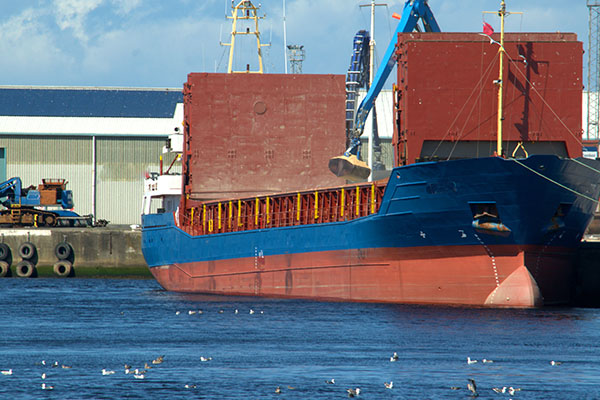Panjiva reports record-high monthly import volumes for July
July shipments, at 1,096,835, topped June’s 1,025,643 and were up 6% annually for a new monthly record, according to Panjiva, topping August 2017’s 1,069,292.

Data issued this week by global trade intelligence firm Panjiva showed record-high United States-bound waterborne shipments in July.
July shipments, at 1,096,835, topped June’s 1,025,643 and were up 6% annually for a new monthly record, according to Panjiva, topping August 2017’s 1,069,292. All months in 2018 have seen growth, with the exception of a 0.2% decline in March, which was the first one going back to a 7.7% annual drop-off in February 2017. On a year-to-date basis through July, shipments are up 6% annually at 6,975,786.
“These numbers are probably a little stronger than what was expected,” said Chris Rogers, Panjiva research director, in an interview. “We initially expected a more rapid pullback in imports from China because of the new import duties [tariffs]. I think what we are probably seeing due to a few things. First, clearly $200 billion is more than $50 billion, and importers are more concerned about the widening range of tariffs, and that is kind of overpowering the effect of the initial round of tariffs for $34 billion worth of Chinese imports that took effect on July 6. We are going to see this rolled out over the next couple of months. The planned $200 billion is not a big concern yet….and would probably not be imposed until mid-September at the earliest. August import numbers could be strong as well…with these duties potentially falling in the middle of peak shipping season.”
Another factor cited by Rogers focused on the underlying status on consumer spending levels, which he described as pretty robust and is likely driving a solid underlying level of import growth. He explained that was clear in certain sectors, like apparel, which has been very strong lately, even though it has been weak overall for the last couple of years.
With the tariff situation currently as is, Rogers said it is likely import growth will remain intact through the end of the year, at least on the consumer side. On the industrial side, though, sectors like automotive, for example, are trending into negative territory.
“One reason is the section 232 review has yet to actually bear fruit, and some of the automakers are pursuing things as business as usual….with auto sales trending down,” he said. “Another thing related to that is NAFTA negotiations dragging on. It is looking like any type of phase in period for new NAFTA rules could be measured in years and not months. That leads to automakers saying that underlying demand is soft and there is no need to rush to beat these tariffs so imports for that part of the industrial economy are weaker.”
Looking out to the remainder of 2018, Rogers explained that with the bulk of President Trump’s threatened tariffs against China not expected to kick in until late August or early September, it is likely U.S. import growth will hold steady. And he added that on a historic seasonality basis and excluding a late Peak Season impact from tariffs, U.S.-bound waterborne shipments could head up by as much as 5.2% in 2018 over 2017.
“Annual growth could also come in at 2%-3%, which is not an unrealistic expectation,” he said. “That really depends on how extreme this round of tariffs are and how soon they are implemented.”

Article Topics
News & Resources
Latest in Materials Handling
NetLogistik partners with Vuzix subsidiary Moviynt to offer mobility solutions for warehouses Materials Handling Robotics: The new world of heterogeneous robotic integration Lucas Watson appointed CSO for Körber’s Parcel Logistics business in North America Hyster recognizes Dealers of Distinction for 2023 Carolina Handling names Joe Perkins as COO C-suite Interview with Keith Moore, CEO, AutoScheduler.AI: MODEX was a meeting place for innovation Walmart deploying autonomous lift trucks at four of its high-tech DCs More Materials HandlingAbout the Author
Subscribe to Materials Handling Magazine

Find out what the world's most innovative companies are doing to improve productivity in their plants and distribution centers.
Start your FREE subscription today.
April 2024 Modern Materials Handling

Latest Resources










